Did conservation practices price out for an agroecology research site in 2024?
Looking at the 2024 financials of the Kellogg Biological Station’s Long-Term Agroecosystem Research experimental site.
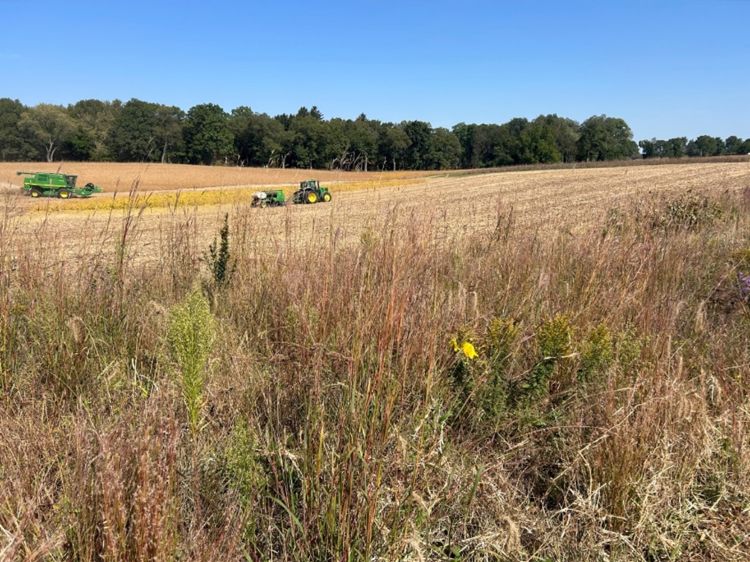
The 2024 cropping season marked the third year at the Kellogg Biological Station’s (KBS) Long-Term Agroecosystem Research (LTAR) site. At the KBS LTAR, typical field crop practices for the region, known as the business-as-usual (BAU) system, are compared to an aspirational (ASP) system that was co-designed by scientists and stakeholders to address goals for environmental, social and agronomic sustainability (Photo 1). The results from this research can inform the opportunities and challenges with innovative farming practices over time, but financial data can show how these approaches compare each year.

The BAU system is based on common practices in Michigan field crops according to producer surveys and U.S. Department of Agriculture data. This system includes conventionally tilled and fertilized corn/soybean rotation without cover crops. The ASP system includes a five-crop rotation (corn, soy, wheat, canola and forages), manure application, cover crops, continuous no-till and variable rate fertilizers based on yield stability mapping. The following explains how the ASP and BAU systems compared financially in 2024.
Comparing corn and soy in 2024
The 2024 season started with a warm and wet spring. These conditions following a mild winter set the stage for a slug outbreak and extensive damage to the ASP soybeans (Photo 2). Like many other high residue fields in Michigan, it did not take long before it was clear that replanting was needed. Replanting costs ($107.68 per acre) plus lost yield due to later emergence dates made ASP soybeans much less profitable than BAU soybeans in 2024 (Table 1).
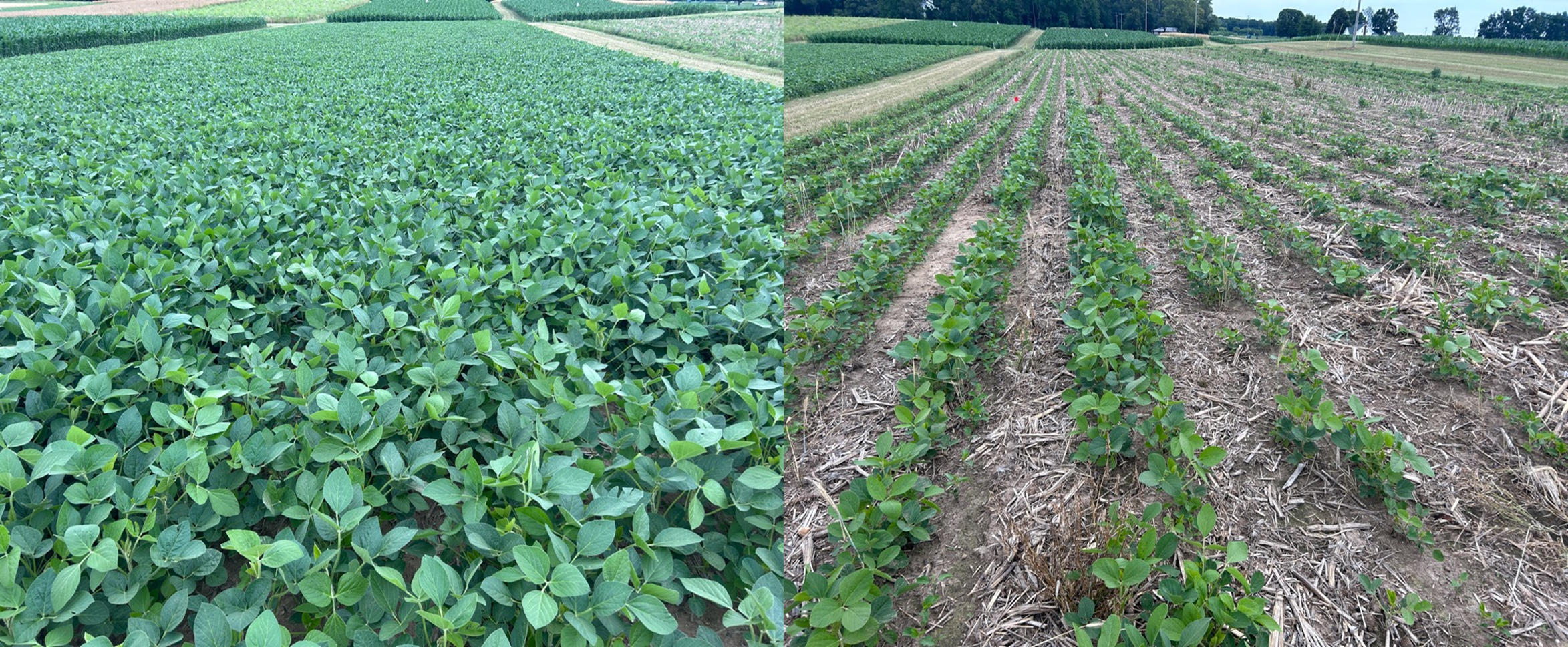
The wet spring affected corn stands in BAU, particularly due to a large rain event on May 8 that caused enough compaction and erosion to reduce corn stand counts in the uncovered BAU fields. In comparison, the ASP system was designed with cover year-round, which protected the field from erosion and soil crusting. The BAU washout did not reduce emergence enough to justify replanting corn, but it did reduce corn populations (Photo 3). By August and September, southwest Michigan experienced a drought that led to dry conditions during grain fill for corn and soybeans in both cropping systems.
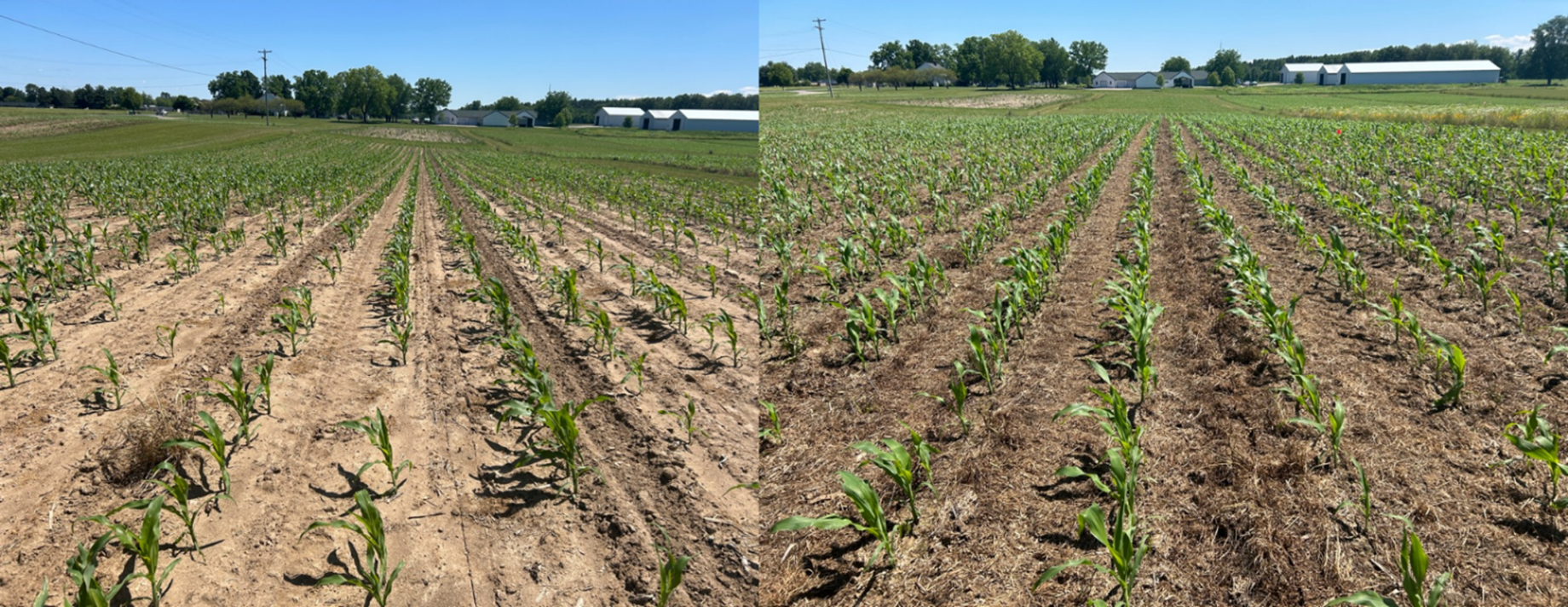
Table 1. A summarized list of per acre production expenses for the aspirational (ASP) and business as usual (BAU) systems in 2024 for corn and soybeans. Each line item includes the product's total cost, application cost and labor cost throughout the season.
|
2024 Field Operation Costs |
Corn |
Soybeans |
||
|---|---|---|---|---|
|
BAU |
ASP |
BAU |
ASP |
|
|
Tillage |
$40.97 |
-- |
$40.97 |
-- |
|
Manure |
-- |
$105.25 |
-- |
$48.75 |
|
Fertilizer |
$230.97 |
$117.37 |
$99.62 |
$42.48 |
|
Planting |
$145.50 |
$129.75 |
$90.51 |
$149.95 |
|
Herbicide |
$43.99 |
$75.08 |
$56.95 |
$59.10 |
|
Other Pesticide |
$42.23 |
$37.48 |
-- |
-- |
|
Cover Crops |
-- |
-- |
-- |
$17.36 |
|
Harvest |
$83.92 |
$83.92 |
$61.49 |
$61.49 |
|
Handling/Drying |
$97.81 |
$107.67 |
$37.60 |
$22.72 |
|
Soil Sampling |
$3.15 |
$3.15 |
$3.15 |
$3.15 |
|
Lime |
$13.40 |
$6.70 |
$13.40 |
$6.70 |
|
Crop Consultant |
$8.00 |
$8.00 |
$8.00 |
$8.00 |
|
Total |
$709.94 |
$674.37 |
$403.69 |
$411.71 |
Table 1 compares BAU and ASP corn and soybean yield and profitability in 2024. This year was the first of three years that ASP corn yielded higher (226.2 bushels per acre versus 216.4 bushels per acre) and had a greater net profit ($379.72 per acre versus $287.88 per acre) than BAU corn. In the first two years of this experiment (2022 and 2023), ASP corn was more profitable than BAU corn despite the lower yield, which had been driven by higher fertilizer expenses in BAU (Table 1). As the ASP system gains expected ecosystem services, yield differences may continue to emerge as soil health can support greater crop resiliency to weather extremes.
Aspirational system – wheat, canola and forages in 2024
Table 2 shows the overall profitability for each crop in rotation within the ASP and BAU systems.
Table 2. Yields and net profits for the entire rotation in the aspirational (ASP)—includes corn, soybean, wheat, forage and canola—and business as usual (BAU)—includes corn and soybean—sites in 2024.
|
2024 Crop |
Business-as-Usual |
Aspirational |
Michigan Average Yield |
||
|---|---|---|---|---|---|
|
2024 Yield |
2024 Net Profit |
2024 Yield |
2024 Net Profit |
||
|
Corn ($4.66/bu) |
216.4 Bu/A |
$287.88/A |
226.2 Bu/A |
$379.72/A |
181 Bu/A |
|
Soybeans ($11.55/bu) |
77.5 Bu/A |
$473.43/A |
59.8 Bu/A |
$228.71/A |
49 Bu/A |
|
Wheat Grain ($6.72/bu) Wheat Straw ($120/ton) Cover Crop Forage ($160/ton) ASP Wheat Total |
-- |
-- |
95.4 Bu/A 1.0 Tons/A 1.7 Tons/A |
$226.24/A $67.70/A $57.79/A $351.72/A |
87 Bu/A |
|
ASP Canola ($0.27/lb) |
-- |
-- |
2,351 lbs/A |
$287.85/A |
N/A |
|
ASP Forage ($160/ton) |
-- |
-- |
6.2 Tons/A |
$467.30/A |
2.73 tons/A |
|
Whole System Average |
-- |
$380.66/A |
-- |
$343.06 A |
-- |
Wheat yields in the ASP rotation were 95.4 bushels per acre, which was greater than average wheat yield across Michigan (87 bushels per acre) (Table 2). The added value of the wheat straw and cover crops sold as forage increased the profit margin for the wheat-based crop sequence (Photo 4).
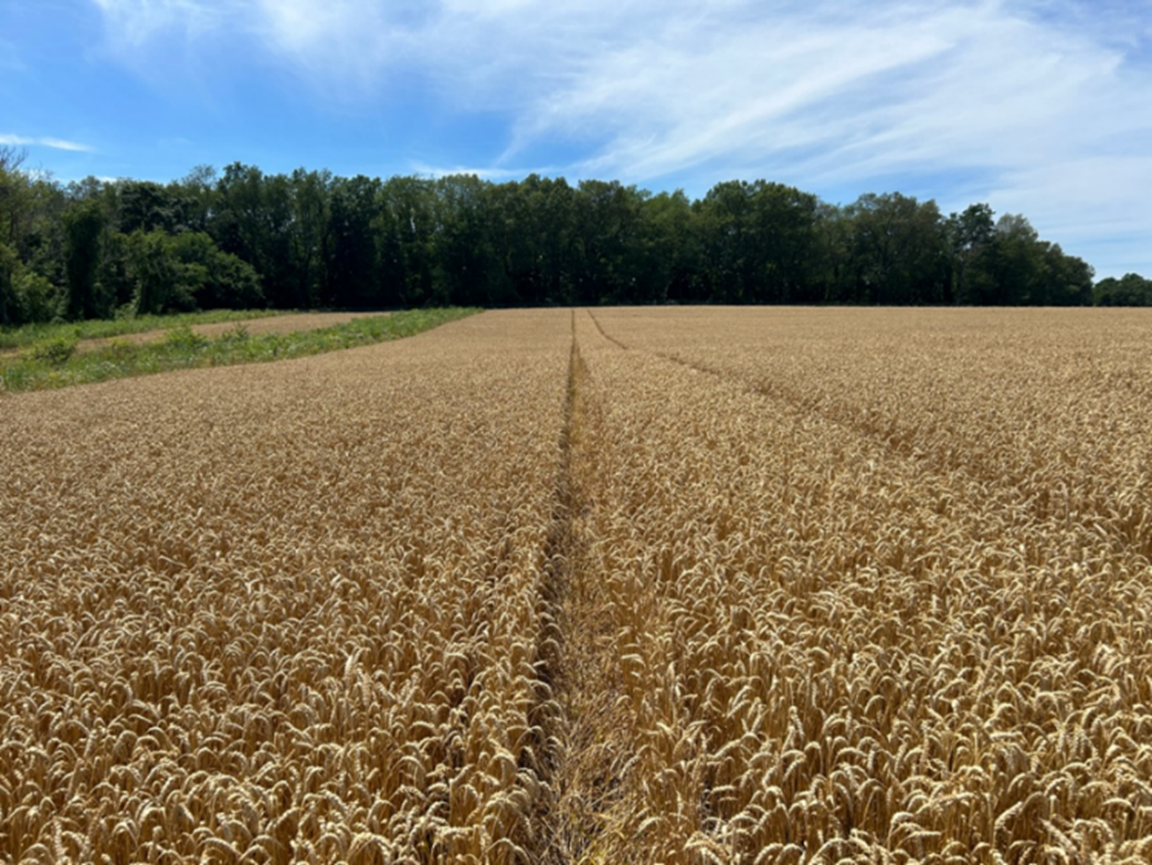
In 2024, canola’s yield of 2,351 pounds per acre and a profit of $287.85 per acre (Table 2) was much greater than canola’s yield and profit from 2023 (Photo 5). While yields were greater this year than last year, some areas of canola fields still suffered from slug damage after planting in the fall, and wildlife damage over winter. Canola follows wheat in our rotation so managing fall residue and preventing a “green bridge” of the cover crop will be key for managing slugs in canola going forward.

Following canola harvest in July, forage is planted into the ASP system. In 2024, the forage was harvested three times (it was harvested four times in 2023), which reduced harvest costs and may have increased yields, but reduced forage value (Photo 6). $160 per ton was estimated as the value in 2024, and $200 per ton was estimated in 2023. The first cutting included a significant proportion of volunteer winter canola, which led to high yields but lower feed quality. Despite the lower quality, forages were more profitable in 2024 than in 2023 due to much higher yields and lower harvesting costs.
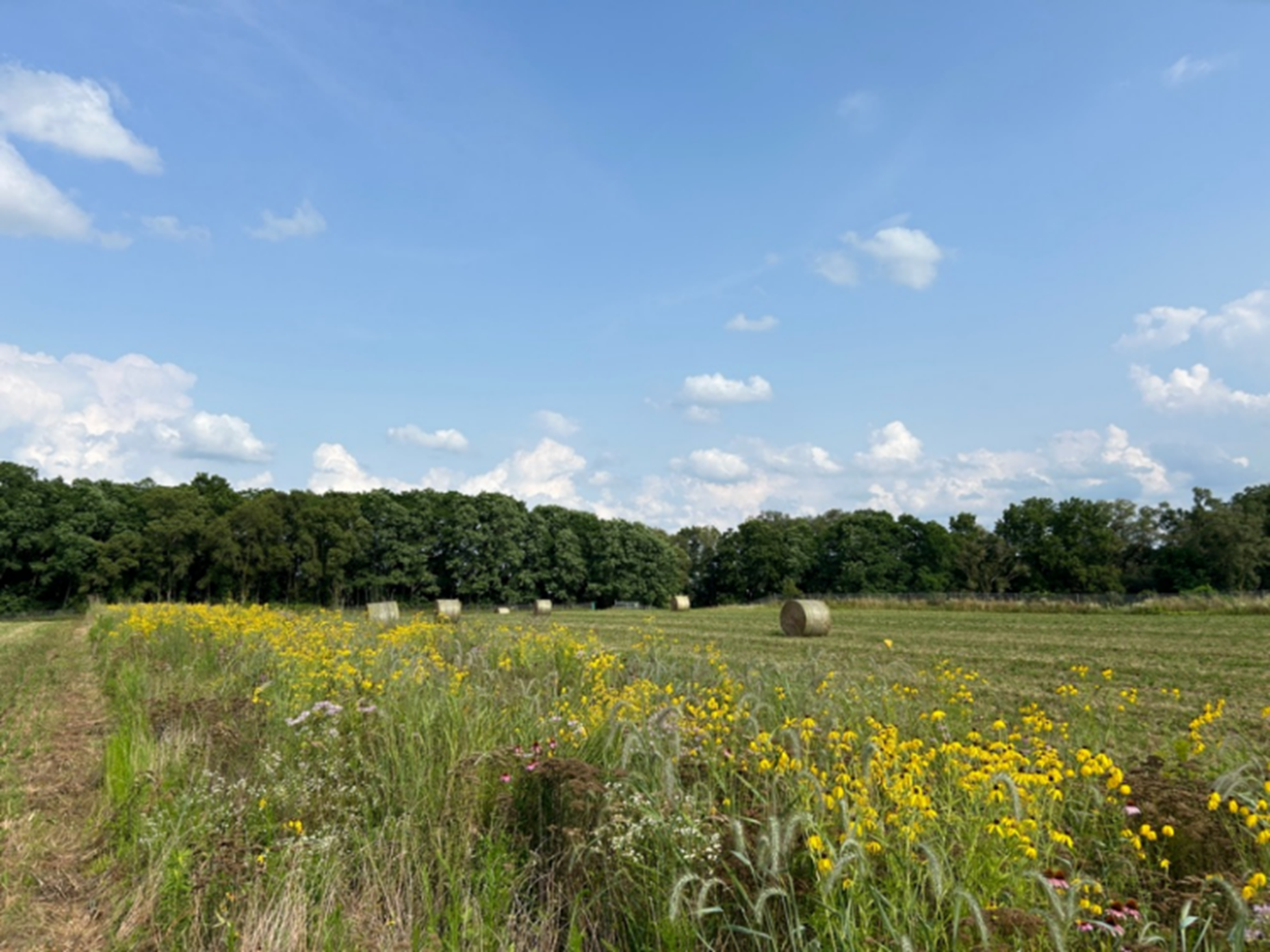
Comparing profitability so far
Maintaining profitability across rotations remains a significant challenge for diversified systems, especially in the early years. Yet, in 2024 we observed some resiliency in ASP corn fields and observed a closer per acre net profit between ASP and BAU in 2024 than what was observed in 2023.
As the KBS LTAR navigates both the benefits and challenges of an innovative cropping system, slight adjustments and troubleshooting have been important parts of finding success in conservation practices. Unlike other long-term research programs, the KBS LTAR prioritizes a system that is adaptive and responds to system and stakeholder needs.
The next growing season (2026) will be the final year of the first five-year ASP rotation. In anticipation, the KBS LTAR plans to work with stakeholder partners to reevaluate what works, what doesn’t and what should be tried in the next version of the KBS LTAR aspirational system. If you have ideas about this or would like to be involved in the conversation, please reach out to the KBS LTAR at kbs.ltar@msu.edu.



 Print
Print Email
Email
